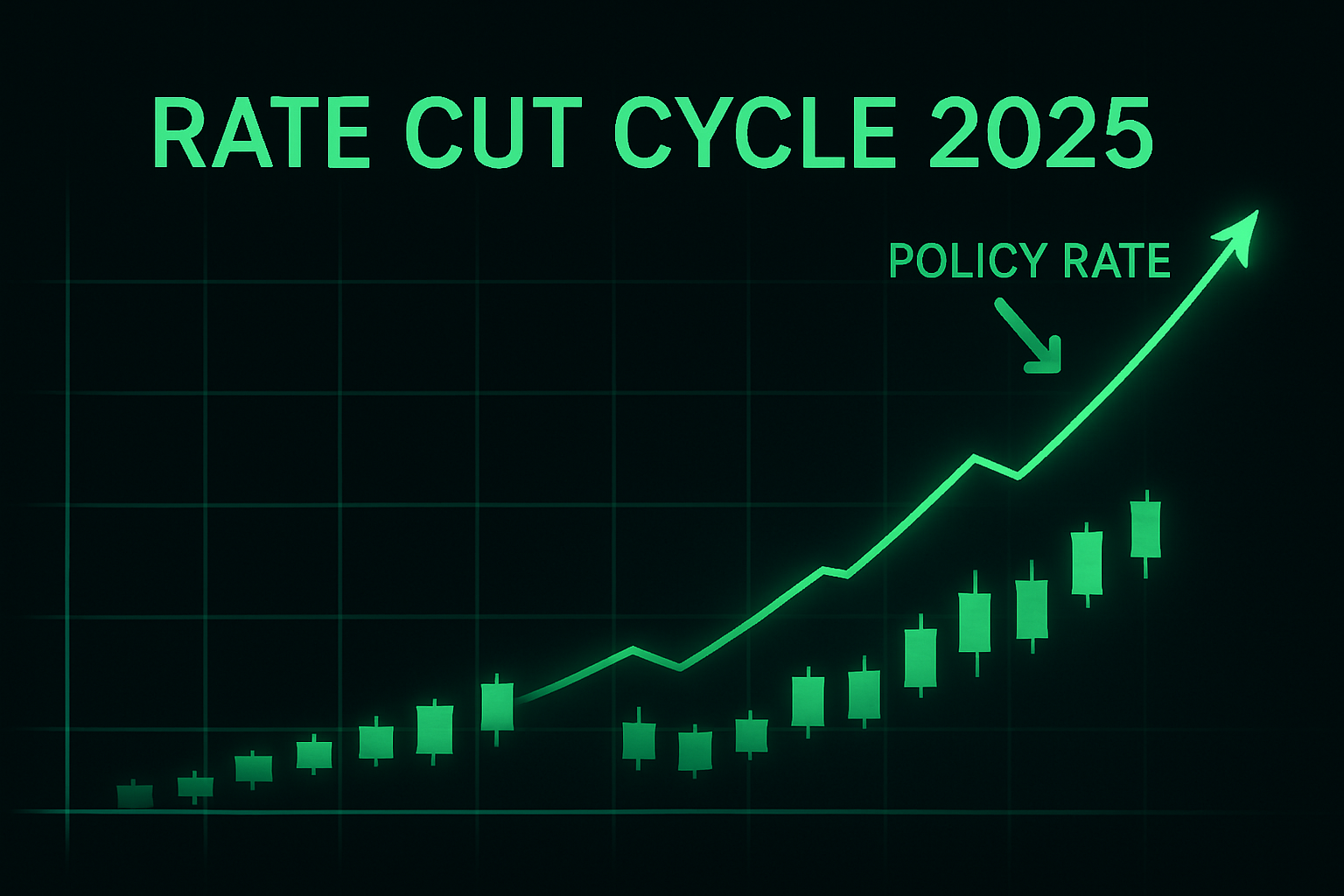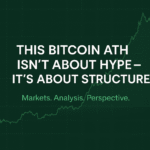Oil is sliding just as gold breaks new records. The paradox captures the tone of global markets this autumn: investors no longer fear inflation as much as they fear a slowdown. Crude is trading like a barometer for growth, while gold has become a thermometer for uncertainty. The split between the two says more about sentiment than supply—and it may be one of the clearest clues to where the global cycle is heading next.
Oil softens, gold glitters
Through mid-October, Brent crude has hovered in the low $60s, its weakest stretch since spring. Traders have turned from supply anxiety to surplus expectations. The latest data show inventories rising and production surprising on the upside, particularly in the United States, Brazil, and Guyana. OPEC+ discipline has frayed at the edges, and Saudi Arabia’s decision to cut official selling prices to Asia signalled that defending market share now trumps defending price. Demand growth, meanwhile, looks fragile as China’s industrial pulse cools and global trade faces another round of tariff threats.
Gold, by contrast, is doing what investors usually expect of it only in moments of crisis: it is setting records. Spot prices surged above $4,300 an ounce this week—an all-time high. The move reflects more than safe-haven reflexes. Expectations of U.S. rate cuts, renewed central-bank accumulation, and fading faith in fiat stability have created a powerful bid. Traders speak of a “wall of worry” driving flows: even as equities hover near highs, money is quietly seeking protection.
What the divergence means
Oil and gold usually travel together when inflation dominates. Both benefit from reflationary booms and retreat when policy tightens. But the link often breaks at regime turns—when the market starts to believe the bigger threat is growth, not prices. That’s where 2025 now sits. The gold rally tells us investors are preparing for easier policy and murkier geopolitics; the oil slump suggests they’re losing faith in near-term expansion.
In short, this is a pivot from inflation hedge to liquidity shelter. The energy market prices the physical world; gold prices emotion, policy, and trust. When those two stories diverge, the signal is rarely trivial.
Geopolitics: priced in rather than priced up
It would be easy to blame the oil drop on macro fatigue alone, but geopolitics tells an equally revealing story. Tensions remain elevated—from the Middle East to the South China Sea—yet the old “risk premium” has evaporated. Traders appear inoculated: after two years of recurring flare-ups, disruptions are re-routed faster, sanctions are arbitraged, and fear burns off within days. Even reports of renewed talks between Washington and Moscow briefly pushed prices down, not up. The market no longer trades on the headline; it trades on how quickly the headline fades.
Gold benefits from that same news cycle in reverse. Where oil reacts to disruptions that may or may not materialise, gold feeds on the accumulation of unease. Every new diplomatic fracture, every ambiguous policy statement, reinforces the instinct to hold something tangible. The metal’s strength this year owes as much to political fatigue as to macro data.
Historical rhymes
The last times gold and oil parted ways so sharply were moments of transition. In the late 1990s Asian crisis, oil collapsed while gold held flat—deflationary shock, liquidity preference. In 2014, shale output and China’s slowdown sent crude from $110 to $50 even as gold quietly outperformed broader commodities. And in 2020, as the pandemic froze demand, oil briefly turned negative while gold became the refuge of record. The pattern is consistent: when growth fear replaces inflation fear, oil underperforms and gold leads.
October 2025 fits that template. Growth indicators are softening, bond yields are bending lower, and markets are starting to price central-bank caution rather than aggression. Commodities that feed factories are falling; those that feed anxiety are booming.
The policy undertone
The Federal Reserve’s communication in recent weeks has reinforced that shift. Investors now expect the first rate cuts by early 2026. That alone explains part of gold’s appeal: when real yields decline, the opportunity cost of holding a non-yielding asset disappears. Oil, by contrast, depends on physical throughput, not the yield curve. A softer economy trumps easier money.
At the same time, central banks themselves are adding to the rally. Reserve managers, led by emerging-market institutions, continue to diversify away from the dollar. Their steady purchases provide a structural floor under gold prices—a dynamic absent from crude. As one trader put it, “Gold has a buyer of last resort; oil has a seller of last resort.”
Why supply doesn’t matter (for now)
OPEC+ still looms large, but the group’s influence is diluted by new entrants and relentless shale productivity. The International Energy Agency’s October report points to a possible surplus emerging by mid-2026, while new projects in South America and West Africa come online ahead of schedule. In such an environment, even minor demand downgrades have an outsized price effect. Until storage levels start drawing and time spreads flip to backwardation, oil will struggle to hold rallies.
Gold, meanwhile, doesn’t face a comparable “glut” problem. Mine supply grows slowly, recycling adds predictability, and the marginal buyer is motivated by fear rather than consumption. The contrast couldn’t be starker: oil’s fundamentals are physical, gold’s are psychological.
China, demand, and the macro hinge
Much of this year’s commodity mood hinges on Beijing. China remains the world’s swing consumer of raw materials, and its slowdown has been sharper than official data imply. Construction activity is still depressed, export orders weak, and stimulus increasingly targeted rather than broad. That combination keeps oil demand subdued while leaving room for safe-haven demand in Asia to grow. Chinese retail investors have turned to gold jewellery and small bars at a pace not seen since 2011, a sign that distrust in domestic assets is feeding the global rally.
From inflation hedge to capital shelter
For most of the past three years, investors bought commodities to guard against inflation. That thesis has quietly morphed into something different: a search for resilience against policy error. The old playbook—buy oil, copper, and industrial metals when money printing accelerates—has given way to a simpler instinct: hold what can’t default. It’s why gold is thriving while base metals lag. The shift may also explain why Bitcoin, which shares some “anti-fiat” DNA with gold, has traded with similar resilience.
In portfolio language, 2025 is turning into a “quality” year. Defensive equities, hard-currency debt, and precious metals outperform cyclicals and leverage plays. Oil, the classic cyclical barometer, is signalling that the expansion is entering its late phase even before official data confirm it.
How investors are positioning
Flows show the change in tone. Commodity ETFs tracking crude and refined products have seen steady outflows since summer, while gold funds continue to attract capital. Futures data suggest hedge funds are cutting net long exposure to oil and adding to gold simultaneously. The crossover—where gold’s open interest surpassed crude’s for the first time in over a decade—was a symbolic moment for traders who watch sentiment more than spreadsheets.
Institutional positioning echoes that story. Pension funds are again using bullion as a hedge against market stress, while multi-asset managers describe gold as “the only consensus overweight left.” Energy equities, by contrast, have lagged despite robust balance sheets and dividends. The perception that the oil trade is “old macro” has become self-fulfilling.
What could change the story
No divergence lasts forever. Several catalysts could close the gap or even reverse it:
- A genuine supply shock. A major pipeline outage or shipping disruption could remove enough barrels to overwhelm the surplus narrative. If inflation expectations rise with it, both oil and gold could rally together.
- Growth surprise. A synchronized rebound in global manufacturing—perhaps triggered by fiscal stimulus in the U.S. and China—would lift crude while capping gold’s appeal as real yields firm.
- Policy misstep. If the Fed delays rate cuts despite slowing data, gold could correct sharply, though risk assets might also stumble. That could narrow the gap in performance but for the wrong reasons.
Reading the signal, not the noise
The oil–gold split is not just a quirk of commodities. It’s a barometer of investor psychology. When crude falls and bullion rallies, capital is saying it values certainty over growth. It suggests markets believe the inflation battle is largely won—but that the victory may come at a cost to activity. In that sense, the divergence is both warning and comfort: warning of a slower cycle, comfort that liquidity backstops remain.
It also fits a broader theme we explored earlier this year in our piece on gold’s record-breaking run and 2026 outlook: markets are relearning to price security. That shift—from chasing return to protecting purchasing power—could define the next leg of this cycle just as surely as rising rates defined the last one.
For investors, the quiet lesson
The temptation is to treat oil and gold as opposite bets. In truth, they are complementary readings of the same macro weather map. Oil tells you about tomorrow’s factories; gold tells you about tomorrow’s confidence. Right now, confidence is winning. Until growth data surprise on the upside and central banks signal conviction that inflation is safely behind them, that dynamic will persist.
The market rarely shouts its message. This October, it’s whispering it instead: growth is the risk to watch, not inflation.





